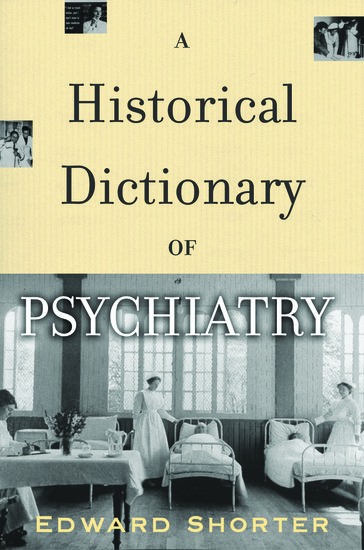By Susan Bélanger and Edward Shorter
Written by Oxford mathematician Charles Lutwidge Dodgson under the pen name Lewis Carroll, Alice’s Adventures in Wonderland was published on 4 July 1865. The book has remained in print ever since, becoming one of the most popular and influential works in all of literature. Alice has been translated into nearly a hundred languages, appeared in countless stage and screen adaptations, and continues to resonate throughout both academia and popular culture.

The analysts’ ruminations were replaced in 1960 with a literary and scientific analysis of Alice in Wonderland and its 1871 sequel Through the Looking-Glass published by Carroll scholar and amateur mathematician Martin Gardner as The Annotated Alice. Commenting on the Red Queen’s “constant orders for beheadings,” Gardner suggests that “violence with Freudian overtones” is quite harmless to children, but that the book “should not be allowed to circulate indiscriminately among adults who are undergoing analysis.”
Meanwhile in the medical literature the analysts were supplanted by neurologists and neuropsychiatrists with the introduction in the 1950s of the Alice in Wonderland Syndrome (AIWS).
In 1952 migraine investigator Caro W. Lippman reported in the Journal of Nervous and Mental Disease on patients experiencing transitory “hallucinations of the sense of body image, in which the patient has the feeling that the entire body, or certain parts of the body, have become distorted in size or shape” in connection with their migraines. One patient compared her sensation of being abnormally short and wide to a “Tweedle-Dum or Tweedle-Dee feeling” (referencing the rotund twins from Looking Glass) and Lippman remarked on the “migraine hallucinations” which Carroll himself described and recorded “in immortal fiction form.”
Three years later British psychiatrist John Todd described “The syndrome of Alice in Wonderland” in the Canadian Medical Association Journal, adopting the name “not only because it is germane as a descriptive term” but also relevant to Carroll’s history of migraines, which “arouses the suspicion that Alice trod the paths and byways of a Wonderland well known to her creator.” Todd expanded the list of diseases in which the symptoms occur to include “epilepsy, cerebral lesion, intoxication with phantastica [hallucinogenic] drugs, the deliria of fevers, hypnagogic states and schizophrenia.” He likewise expanded the list of possible symptoms to include “illusory changes in the size, distance, or position of stationary objects in the subject’s visual field; illusory feelings of levitation; and illusory alterations in the sense of the passage of time.”
Subsequent reports on AIWS in the medical literature have come from various specialties. Infectious diseases related to the condition include mononucleosis, Epstein-Barr virus, and most recently H1N1, the virus responsible for the Sudden Acute Respiratory Syndrome (“SARS”). Neuroscientists are beginning to employ new technologies including magnetic resonance imaging (MRI), functional MRI (fMRI), and repetitive transcranial magnetic stimulation (rTMS) to diagnose and treat the condition.
Psychiatrists continue to find rare cases associated with depression and psychotic disorders, and on a lighter note Dublin psychiatrist Brendan D Kelly provided a “Psychiatric Perspective” on Alice in as 2008 letter to the Journal of Developmental and Behavioral Pediatrics. The story is riddled throughout with psychopathology, he claims, diagnosing the weeping Mock Turtle as “clinically depressed” and the Young Crab as displaying “the first case of oppositional defiant disorder ever described in a juvenile crustacean.”
The most imaginative medical application of Alice in Wonderland, however, occurs as the jocular prologue to a more serious examination of breathing disorders described in several of Shakespeare’s historical dramas. In an essay titled “Sleep of the Great,” published in 2000 in the journal Respiratory Physiology, William A. Whitelaw and A.J. Black of the University of Calgary identify the Mad Hatter’s Tea Party as an early report of obstructive sleep apnea and its treatment. “You might just as well say… that ‘I breathe when I sleep’ is the same thing as ‘I sleep when I breathe’” says the Dormouse (“which seemed to be talking in its sleep”), to which the Hatter replies “It is the same thing with you.” Whitelaw and Black interpret the Dormouse’s “severe daytime somnolence” as “a cardinal symptom of obstructive sleep apnea…. The dormouse cannot breathe and sleep at the same time because… his pharynx falls closed the moment he falls asleep.” The episode ends with Alice walking off in disgust (“It’s the stupidest tea-party I ever was at in all my life!”) as the Hare and the Hatter stuff the Dormouse head first into a teapot. Referring to the accompanying illustration by Sir John Tenniel, Whitelaw and Black explain that the teapot “fits tightly around his neck, thus compressing the air in the pot and producing continuous positive airway pressure, which is the best treatment for obstructive sleep apnea.”
Edward Shorter is Jason A. Hannah Professor in the History of Medicine and Professor of Psychiatry in the Faculty of Medicine, University of Toronto. He is the author of numerous books on psychiatric history including A Historical Dictionary of Psychiatry and Before Prozac: The Troubled History of Mood Disorders in Psychiatry. Susan Bélanger is Research Coordinator with the History of Medicine Program, University of Toronto, and a keen student of interactions between literature and medicine. Read their previous blog post on “Anti-psychiatry in A Clockwork Orange.”
Subscribe to the OUPblog via email or RSS.
Subscribe to only psychology articles on the OUPblog via email or RSS.
View more about this book on the ![]()
![]()


[…] OUPblog Oxford University Press Share this:EmailStumbleUponPrintFacebook This entry was posted in History, Sleep, Sleep Apnea. Bookmark the permalink. ← Gender Differences in Internet Experience […]
[…] Queen of Hearts of Alice in Wonderland by Lewis Carroll (Charles Dodgson) (OWC 1; OWC 2; Alice in Wonderland in Psychiatry and Medicine; Simon Winchester on Charles Dodgson; Carroll’s first […]